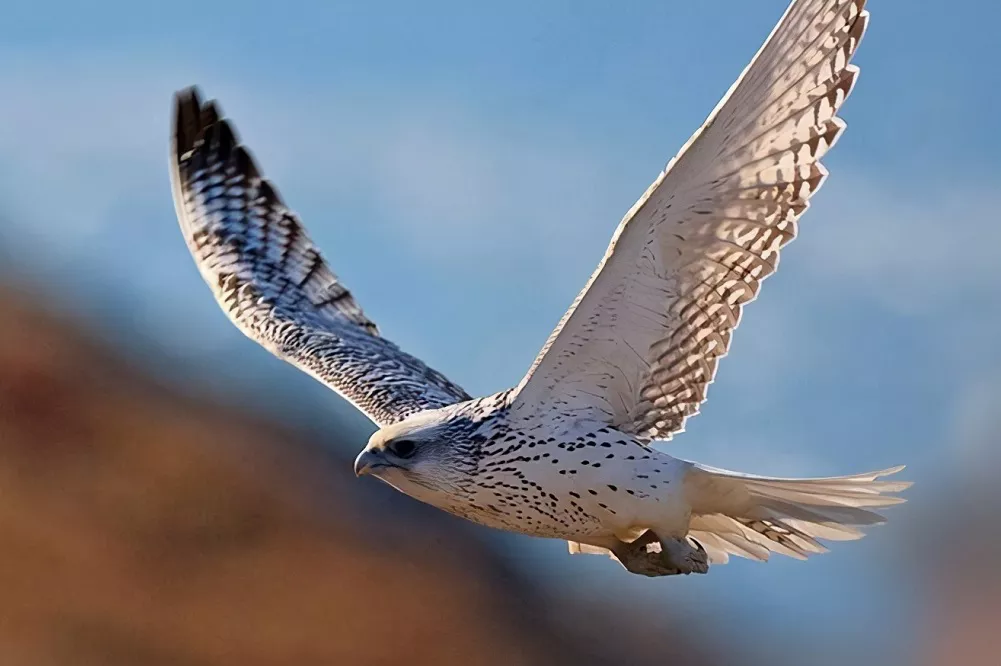The gyrfalcon and goshawk are two remarkable birds of prey that share several characteristics but also possess distinct differences. While both species are renowned for their hunting abilities and commanding presence, a closer examination of their physical attributes, behavior, and ecological niches reveals intriguing contrasts. This article aims to provide a comprehensive comparative analysis of the gyrfalcon and goshawk, shedding light on their unique features and highlighting the factors that set them apart.
Physical Characteristics:
- Size:
The gyrfalcon (Falco rusticolus) is notably larger than the goshawk (Accipiter gentilis). Adult gyrfalcons typically measure between 48 and 61 centimeters (19 to 24 inches) in length, while adult goshawks range from 46 to 61 centimeters (18 to 24 inches). Gyrfalcons also exhibit a larger wingspan, reaching between 110 and 130 centimeters (43 to 51 inches), compared to the goshawk’s wingspan of 97 to 116 centimeters (38 to 46 inches).
- Plumage:
Gyrfalcons exhibit a diverse range of plumage variations, including the white phase (predominantly white), dark morph (dark gray to black), and intermediate phase (a mix of white, gray, and brown). In contrast, goshawks possess a relatively consistent plumage, characterized by dark gray or brown feathers on their upperparts and lighter underparts with fine streaking.
- Beak and Talons:
The gyrfalcon possesses a robust, hooked beak adapted for tearing apart prey, while the goshawk has a powerful, hooked beak used for gripping and dispatching its quarry. Both species have sharp, curved talons that enable them to grasp and subdue their prey effectively.
Behavior and Hunting:
- Hunting Techniques:
Gyrfalcons and goshawks employ different hunting strategies due to their varying ecological niches. Gyrfalcons are renowned for their aerial hunting prowess, utilizing swift and agile flight to chase down prey in open spaces. They often hunt from a high perch or during dramatic stoops, targeting birds in flight or small mammals on the ground. Goshawks, on the other hand, are forest-dwelling birds known for their stealthy ambush hunting technique. They rely on their agility and maneuverability to navigate through dense vegetation and surprise their prey with a sudden burst of speed.
- Prey Preferences:
Gyrfalcons primarily feed on birds, including ptarmigan, ducks, and other waterfowl. In Arctic regions, they target species such as grouse and seabirds.
Goshawks have a broader diet, preying on a variety of medium-sized birds, small mammals, and occasionally reptiles. Their prey may include pigeons, squirrels, rabbits, and even other raptors.
Habitat and Distribution:
Gyrfalcon: Gyrfalcons are known for their adaptability to diverse habitats. They inhabit Arctic regions, including tundra, rocky coasts, and mountainous areas. They can also be found in non-Arctic regions during the breeding season, utilizing open grasslands and coastal cliffs for nesting.
Goshawk: Goshawks are predominantly forest-dwelling birds, inhabiting various types of woodlands, including deciduous and coniferous forests. They require a mix of dense cover for hunting and open areas for flight. Goshawks are found in Europe, Asia, and North America.
Conservation Status:
Gyrfalcon: The gyrfalcon is classified as a species of least concern by the International Union for Conservation of Nature (IUCN). However, specific subpopulations in certain regions face conservation challenges due to habitat loss, disturbance, and illegal hunting.
Goshawk: The goshawk is also categorized as a species of least concern by the IUCN. However, local populations may face threats from habitat fragmentation and persecution in areas where they come into conflict with human activities.
Conclusion:
While the gyrfalcon and goshawk share similarities as formidable birds of prey, they possess distinct differences in terms of size, plumage, hunting techniques, and habitat preferences. Understanding these variations enhances our appreciation for these remarkable species and underscores the importance of their conservation in their respective ecosystems. Through continued research and conservation efforts, we can ensure the continued survival and well-being of both the gyrfalcon and goshawk.
Related topics:


 Facebook
Facebook  Instagram
Instagram  Youtube
Youtube 